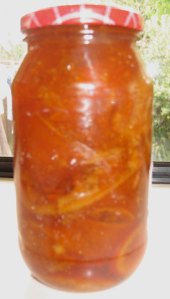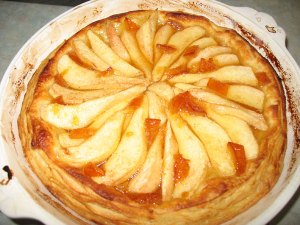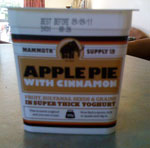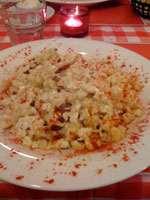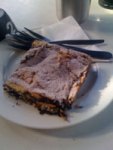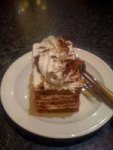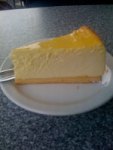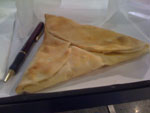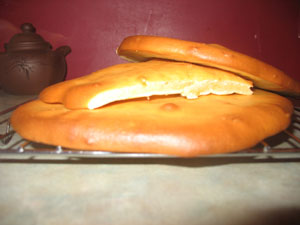
Danger, danger!!
On Monday our children had their yearly dental check up, all was well and as we left the lovely dental nurse gave us the latest info sheet put out by the district health board on eating for healthy teeth. It was on a bright red piece of paper and had a green light traffic light picture on one side with everyday foods underneath it and on the other half of the page was a red light and underneath this, it said “food for special occasions”. Many of the foods in the special occasions section were fair enough – fizzy drinks, sweets and chocolate, but then we also noted biscuits, cake, honey, jam and “dried fruit eg raisins” were there too. This sheet sparked quite a rant in our house. What were the people who wrote this sheet thinking? Our lovely homemade jam only on special occasions? If they had already thought up the idea of using traffic lights, why not use the orange caution for foods that you need to watch but still have regularly?
Last week Karl had happened to watch a NZ made cooking show on Kidzone. They were making pasta-bake with broccoli and other extremely healthy foods. There was even dietician who came on to tell viewers that they shouldn’t be cooking with fat or oil, and should try steaming instead. Steaming food is a valid and lovely way to cook food, but it has to be done carefully. I can’t think of a quicker way of reducing food to a bland soggy mess than just bunging it in a pot and steaming it! And yet the other night when we flicked past the food channel the chef was making a baked Alaska with ice cream, egg whites, sugar and slices of raspberry sponge roll. A dish our kids would have had a ball making. It seems that such cooking is for adults only these days.
Our question is this – Why? Why is all information directed at children’s food pointed at health and not balance? Why are we not teaching our children to enjoy food, the huge variety it comes in and appropriate portion sizes? Food is more than just fuel for our bodies, it is emotional, it is about sharing, it is about relationships as we cook for each other and it is about tastes and smells and delighting our senses. It is art, it is memories, it is comfort and adventure.
It seems that if you ate the way the dental nurses and dieticians advocate food would cease to be a joy, and instead would be scientifically calculated to do you the least harm. This is not the attitude we want our children to have about food! It’s really hard watching our skinny, active 6 year old worrying about fat in her diet, and getting confused about why her parents (of all people) condone this dangerous daily consumption of jam.
Sometimes it feels we have become so afraid of food we miss the point. Sure salt can be bad, but the western style of cooking food without salt is awfully bland. If salt is an issue you can always cook like parts of India where flavours are balanced by putting in a lot of spices, garlic and onions rather than bringing out subtle flavours by adding salt at the end of a dish. We cook things in fat for a reason – it is tasty and satisfying. Of course too much is bad, but in places such as the USA they are finding offering low fat alternatives doesn’t help the problems of obesity. People just eat more to be satisfied or treat themselves more often because they think they are eating low fat all the time. This article from Nature suggests moderate fat reduction in the diet is much more likely to be sustainable and thus beneficial. We find it slightly offensive that maybe by letting our kids taste oil or fat we’ll immediately abandon our wonderful, varied menu and instead get fish and chips every night. Our kids eat well. And yes, we add salt and cook food in oil where appropriate. We enjoy sweet things as well as savoury.
One of the things I loved about our shop was a couple of local primary school boys who used to come to all our tastings and cooking demonstrations and dare each other to try stuff. We always encouraged them and asked them what they thought. One of them in particular had a very good palate. It was great to see them become increasingly confident to try the Mexican cactus strips, the cold sour cherry soup or the stuffed vine leaves or buckwheat pancakes. Talking to the mother of boy with the great palate she said he was a very fussy eater at home but had become increasingly less fussy and open to try things since he began visiting our shop. I think that is more the attitude we need to foster – a love of trying foods, their flavours and cooking them, then takeaways from conglomerates have less appeal. We should be teaching variety and balance, not stripping everything down to the least harmful components.
A favourite quote which seems so apt for the silly red sheet (now in our recycling bin) is the following:
“Food these days is often identified as the enemy. Butter, salt, sugar, eggs are all out to get you. And yet at our best we know better. Butter is… well, butter: it glorifies almost everything it touches. Salt is the sovereign perfecter of all flavours. Egg are, pure and simple, one of the wonders of the world. And if you put them all together, you get not sudden death, but Hollandaise – which in its own way is not one bit less a marvel than the Gothic Arch, the computer chip, or a Bach fugue.”
Robert Farrar Capon – The Supper of the Lamb
-43.516353
172.571760


